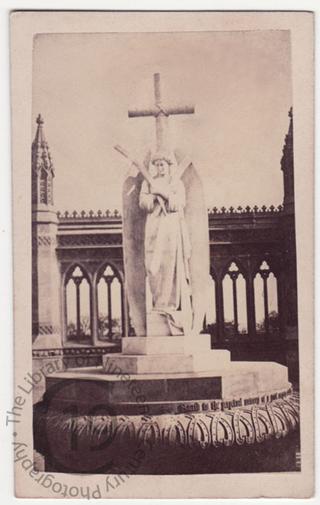
The Angel of Cawnpore
The memorial built at Cawnpore to commemorate those who were massacred there during the Indian Mutiny of 1857. The statue of an angel was the work of Baron Carlo Marochetti; the Neo-Gothic, octagonal, stone screen which surrounded it was designed by Henry Yule.
The Siege of Cawnpore was a key episode in the Indian rebellion of 1857. The besieged British in Cawnpore (now Kanpur) were unprepared for an extended siege and surrendered to rebel Indian forces under Nana Sahib, in return for a safe passage to Allahabad. However, under ambiguous circumstances, their evacuation from Cawnpore turned into a massacre, and most of them were killed. Those who were captured were later executed, as an East India Company rescue force from Allahabad approached Cawnpore. In what came to be known as the Bibighar Massacre (15 July 1857), 120 British women and children captured by the Sepoy forces were hacked to death and dismembered with meat cleavers, with the remains being thrown down a nearby well in an attempt to hide the evidence. Following the recapture of Cawnpore and the discovery of the massacre, the outraged British forces engaged in widespread retaliatory counter-atrocities against the captured rebel Indian soldiers and civilians. The murders greatly embittered the British rank-and-file against the Sepoy rebels and inspired the war cry ‘Remember Cawnpore!’
Inked and pencilled inscriptions on the reverse of the mount read:
(1) ‘Interior of “The Well” / Cawnpore / 1st Dec. 1867’
(2) ‘In Mem[oriam] 15th July 1857’
(3) ‘from Col. Cassy [sp?] 18th July 1867’
Photographer unidentified.
Code: 125208




